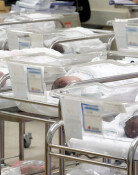Ferry disaster claims lives of high school students on field trip
Ferry disaster claims lives of high school students on field trip
Posted April. 17, 2014 05:30,
The Sewol, a 6,825-ton ferry, sank at waters north of Byeongpung Island in Jindo County, South Jeolla Province Wednesday morning, killing two including Jeong Cha-woong, an 11th grader at Danwon High School, with 164 others rescued. The ferry was on its way to Jeju Island with 459 people on board, including teachers and students of Danwon High School in Ansan, Gyeonggi Province, who departed Incheon Port Tuesday night for a field trip. The Korea Coast Guard, the Navy and the Air Force immediately launched rescue operation by deploying transporters, helicopters and patrol boats, but fears raised over a possible massive disaster since 293 people remained still missing. The tragic accident has occurred again in less than two months after the collapse of snow-covered roof at a resort in Gyeongju, North Gyeongsang Province, which took the lives of 10 students from Busan University of Foreign Studies on Feb. 18. It feels truly lamentable that disasters stemming from lack of safety awareness have occurred in succession.
The Navy deployed the ship salvage unit (SSU) to search and rescue survivors, but the situation does not allow the elite troops to immediately dive and enter the sunken vessel. Watchers say due to speedy current and poor underwater visibility, it will take time before rescuers can launch underwater search operation in earnest. With experts saying that as time passes, the possibility for students who stayed in the cabin on lower-levels of the ferry will dim in tandem, those who follow the news on the accident feel extremely anxious.
The Gyeonggi Office of Education and Danwon High School reportedly informed parents of the accident belatedly. Upon hearing the news, parents anxiously waited for updates on rescue operations. The authorities initial announcement that all the students on board had been rescued without properly checking and eventual revocation of the announcement, which only aggravated anguish among parents and the public. We wonder when Korea will be able to say goodbye to third world-type accidents followed by chaotic sloppy response.
The Sewol reportedly departed more than two hours behind the original schedule due to thick fog. Many questions are being raised about how such an accident happened in waters that were relatively calm without high waves. After the occurrence of Gyeongju accident, President Park Geun-hye instructed her administration to thoroughly check the safety of collective training trips and events for students, but this massive accident has recurred even before echo of her request has completely dissipated.
The ferry reportedly started to instantly submerge, with its portside reclining, after massive "banging sound. A crewman is quoted as saying, After banging sound at the bow section of the ship, the vessel tilted, suggesting that the ship highly likely hit a rock before sinking. Waters around the accident site was foggy, but the weather condition was reportedly good enough for navigation. It cannot be ruled out that the operators effectively caused the accident by failing to abide by rules of safe navigation. It is reported that the primary captain of the ferry was on leave, and hence a substitute operated the vessel, and authorities must investigate whether the substitute followed all the required regulations.
If the Sewol cruised based on its ordinary navigational route, there would be little chance for the accident to occur, and it is questionable how the accident could have happened. Suspicion is also being raised whether the operators navigated a short-cut route to make up for delays in departure, and ended up causing the accident. There seems to be many problems in the process of evacuation as well. A student who was rescued said, Even though the cabin of the vessel was being submerged, in-house audio broadcasting only asked people to stay foot, adding, Many people suffered injury in the back and legs as they slipped or fell off while the vessel tilted. Passengers inside the ship were put in extreme chaos at a crossroads of life: whether they should remain in the cabin according to the broadcast instruction, or evacuate from the submerging cabin. It is doubtable if the cabin crew received proper training in advance for a possible maritime accident.
Headline News
- N. Korea launches cyberattacks on S. Korea's defense companies
- Major university hospital professors consider a day off each week
- Italy suffers from fiscal deficits from ‘Super Bonus’ scheme
- Inter Milan secures 20th Serie A title, surpassing AC Milan
- Ruling and opposition prioritize spending amid tax revenue shortfalls







